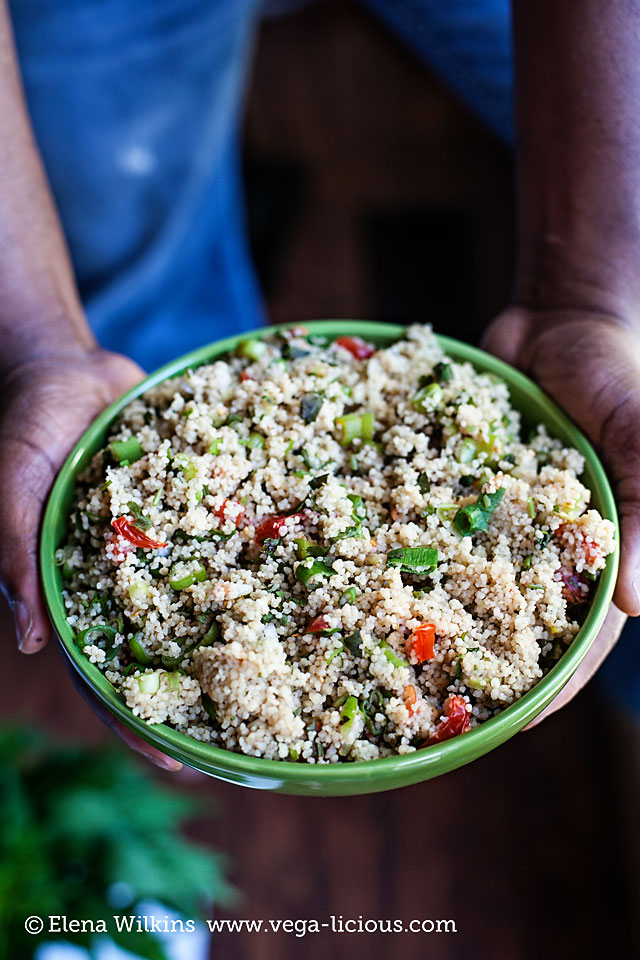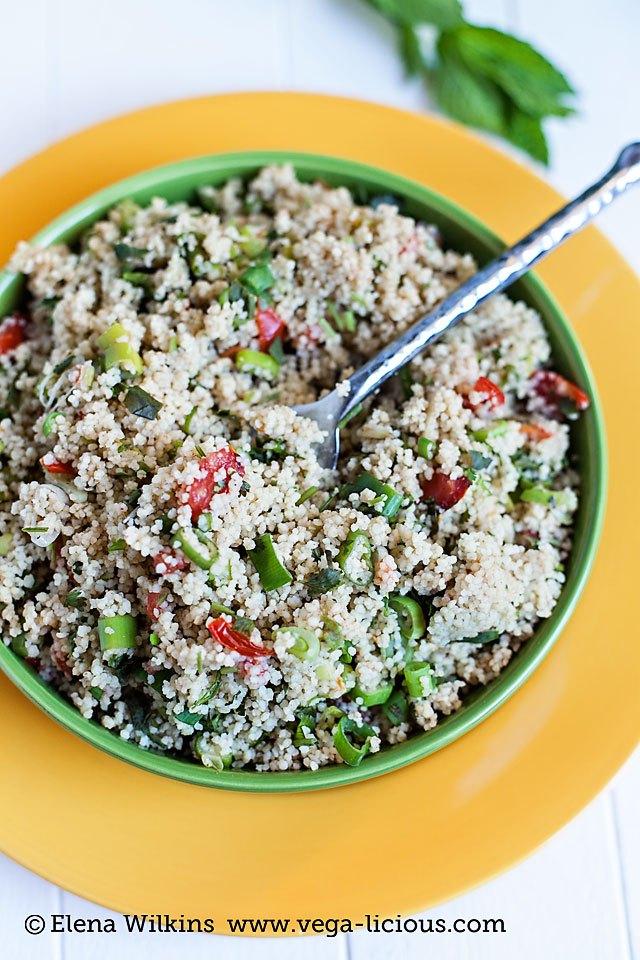
You’re on the way home after a long day at work. You’re tired. All you want to do is get home, kick off your shoes, grab a cup of your favorite tea, stretch your legs out and go brain dead…for at least a few minutes.
Then the panic sets in–you’ve got nothing to eat! You’ve got nothing healthy to feed your family. Now you’re feeling terrible, yet, you’re so tired that you can barely think about anything, including a healthy meal for your munchkins.
Fast food is out of the question, because you know better, and because it’s really not that fast–you will be sitting in the drive-through line for a long time along with every other energy drained parent, burning up your gas and your time.
But there’s fast food that is faster than the fast food (cue up angelic music)–my 15 Minute Fat Free Couscous Recipe that’s not only delicious and quick to make, but it’s also good for your health and kind to your hips. It’s the kind of food that makes you feel like a super-mom and a chef, rather than a tired failure.

“Couscous, what is that? Where does it grow? And how do you eat it?” some of us would wonder before our health loving days.
In technical terms–couscous is the husked and crushed, but un-ground, semolina of hard wheat. Semolina is the hard part of the grain of hard-wheat, which resists the grinding of the millstone. (it’s not gluten free, if you wonder)
Couscous takes only minutes to make and can be served hot or cold. It’s often added to salads, to make them more filling. 
It is also one of my favorite grains to have on hand for those “I have no time or energy to cook, yet I love myself and my family enough to care” moments. I make salads and soups with it, and also hot couscous oriented dishes. Today I’m giving you one of my favorites that takes only 15 minutes to make from start to finish.
This recipe is loaded with health promoting ingredients.
Tomatoes, which are known for their outstanding antioxidant content, including being a great source of lycopene, which is needed for bone health.
A study was designed in which tomato and other dietary sources of lycopene were removed from the diets of postmenopausal women for a period of 4 weeks, to see what effect lycopene restriction would have on bone health. At the end of 4 weeks, women in the study started to show increased signs of oxidative stress in their bones and unwanted changes in their bone tissue. The study investigators concluded that removal of lycopene-containing foods (including tomatoes) from the diet was likely to put women at increased risk of osteoporosis. They also argued for the importance of tomatoes and other lycopene-containing foods in the diet. (source)

Cumin, which some are hailing as the next big superfood, aids in digestion and can help strengthen your body’s natural defenses.
Cumin seeds are an excellent source of iron, a mineral that plays many vital roles in the body. Iron is an integral component of hemoglobin, which transports oxygen from the lungs to all body cells, and is also part of key enzyme systems for energy production and metabolism. Additionally, iron is instrumental in keeping your immune system healthy. Iron is particularly important for menstruating women, who lose iron each month during menses. Additionally, growing children and adolescents have increased needs for iron, as do women who are pregnant or lactating. (source)
Green onions and garlic, rich in sulfur-containing compounds, which may work in an anti-clotting capacity and help prevent the unwanted clumping together of blood platelet cells. There is also evidence showing that sulfur compounds in onion can lower blood levels of cholesterol and triglycerides, and also improve cell membrane function in red blood cells. And we all know well that onions and garlic are great for boosting immunity and protecting us from flu and colds. Both are also known for their cardiovascular benefits.
Cilantro (YUM! one of my favorite herbs!)–filled with phytonutrients including carvone, geraniol, limonene, borneol, camphor, elemol, and linalool. Cilantro is the Spanish word for coriander leaves.
Recent research studies have confirmed that when coriander was added to the diet of diabetic mice, it helped stimulate their secretion of insulin and lowered their blood sugar. When given to rats, coriander reduced the amount of damaged fats (lipid peroxides) in their cell membranes. And when given to rats fed a high-fat, high-cholesterol diet, coriander lowered levels of total and LDL (the “bad” cholesterol), while actually increasing levels of HDL (the “good” cholesterol). Research also suggests that the volatile oils found in the leaves of the coriander plant, commonly known as cilantro, may have antimicrobial properties. (source)

So, not only are you getting a quick meal out of me today, you are also getting loaded with delightfully delicious, disease fighting compounds that are begging to be a part of your and your family’s daily diet. (I hope that you are happily grinning by now. Who knew that fast food can be this good for you!)
- 2 cups whole wheat couscous
- 3 cups filtered water
- 2 large or 6 small ripe tomato
- 1.5 tbsp ground cumin
- 3 cloves minced garlic
- 1 cup (4 large springs) green onions
- 1 cup chopped cilantro or your favorite herb
- 1.5-2 tsp Himalayan salt, or to taste
- Pot from World's Finest Ply Steam Control 17-Piece Stainless-Steel Cookware Set
- Knives from Pure Komachi collection
- Cutting Board
- Measuring Cups
- Wooden spoon for stirring
- mince or mash garlic
- chop the hard part of green onions
- add both to pot, and place pot on high heat
- sauté for 2-3 minutes, stirring and splashing a little bit of water (instead of using oil)
- add cumin, stir it in
- add salt, stir it in
- add water and couscous
- bring to boil
- stir, cover the pot and turn off the heat; let it sit for 10 minutes (it needs to stay covered)
- meanwhile chop green onions, cilantro and cube tomatoes
- after 10 minutes add these ingredients to the pot, stirring thoroughly
- taste for salt, and add more if needed

